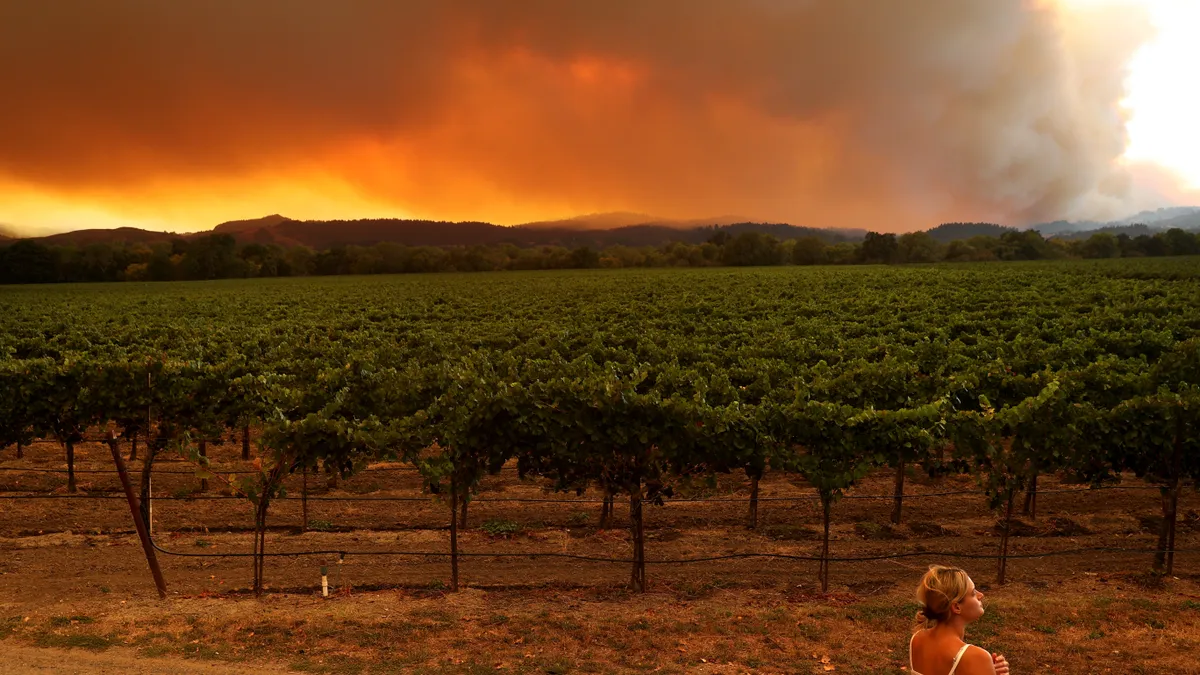Dive Brief:
- Clean energy groups and ratepayer advocates are protesting Pacific Gas & Electric's (PG&E) proposal to utilize its existing demand response programs to reduce the use of temporary diesel generation during public safety power shut-offs, amid concerns that it doesn't go far enough.
- PG&E in early June filed a letter with the California Public Utilities Commission (CPUC) outlining its plan to use two demand response programs as a "clean substation microgrid project." Regulators in January had required the utility to document such a project as a condition for using temporary diesel generation during the shut-offs.
- The utility this week filed its 2023 general rate case with the CPUC, forecasting investments of $7.4 billion to address wildfire risk in its service territory from 2023 through 2026, while simultaneously reducing the impact that wildfire shutoffs have on its customers.
Dive Insight:
PG&E asked regulators to approve a total base revenue requirement of $15.46 billion for 2023, which is $3.56 billion more than its adopted revenue requirement for 2022. The utility expects to spend around $3.2 billion in expenses and $4.2 billion in capital from 2023 through 2026 on wildfire risk and reducing the impacts of shutoffs. These investments include managing vegetation around its power lines, creating more resilient infrastructure, and strategies to reduce the duration and frequency of public safety power shutoffs.
The use of diesel generation to power communities during the public safety power shut-offs has been a point of contention with California energy stakeholders for a while. In January, the CPUC approved a decision allowing utilities to reserve temporary generation, including diesel, for anticipated outages during the 2021 wildfire season. However, they also required these requests to be accompanied with plans to establish clean substation microgrid projects, as an initial step toward eventually weaning off fossil fuel back-up power.
PG&E in March requested permission to reserve 168 MW of temporary generation for the upcoming fire season. Regulators later approved that request, and opted to address the issue of the clean substation microgrid projects down the road.
PG&E's June filing proposes testing existing demand response programs to see how they can reduce the use of diesel and reduce greenhouse emissions during public safety power shut-offs. The utility pointed to two programs with a combined potential of around 14 MW of load reduction — a base interruptible program, which could reduce load on the system on a day-of basis if the California Independent System Operator issues a curtailment notice, and a voluntary SmartAC program, which would provide customers with a one-time, up-front payment to allow their air-conditioning and thermostats to be managed remotely when needed.
The utility opted to go with the demand response projects after conducting an all-source temporary generation request for proposals (RFP), held between Jan. 20 and Feb. 3. There were 59 possible vendors invited to participate in the process, but the only alternatives to diesel generation for substations that PG&E received were either natural gas, or natural gas paired with battery storage, the utility said. Eventually, it concluded that using generation other than diesel for a clean substation project this year would not be feasible.
Clean energy advocates, however, expressed dismay at what they called "half-hearted attempts to meet the commission's requirement." In a protest filed with the CPUC on Tuesday, the California Environmental Justice Alliance, Sierra Club, Vote Solar and other groups pushed back against the idea that existing demand response programs would meet the commission's requirement of "clean substation microgrid pilot projects."
While CEJA generally supports the use of demand response to reduce load, PG&E request to simply study its existing demand response programs isn't what the commission asked for, said Tyler Earl, staff attorney with Communities for a Better Environment, who is representing CEJA at the commission.
"It's not even new demand response or expanding demand response, just studying what they have — that's nothing new," Earl said, adding that the groups are more in favor of solar-plus-storage projects, and have broader concerns around the transparency of the utility's temporary generation RFP process.
The CPUC's Public Advocates Office also protested PG&E's request, urging regulators to get more feedback from developers on the utility's 2021 RFP process. The ratepayer advocate noted that the RFP was opened just two weeks before bids were due, and recommended that either the commission or a third-party consultant survey developers to find out about and fix possible barriers faced by renewable generation projects.
"Given that 59 potential vendors were invited to participate in the RFP, investigation is necessary as to why none of the completed bids were successful, and why none of the bids received incorporated renewable generation sources," the group said in its protest.
A response was also filed by Wisewood Energy, a biomass energy developer, which considered participating in a temporary generation request for information that PG&E issued in November 2020. The group eventually decided against doing so, in part because it determined its technology did not qualify under the definition of temporary generation in the process, as well as because the two-week deadline provided by PG&E did not allow time to put together a "serious submission."
Based on these and other experiences, "it is Wisewood's opinion that PG&E's process of vendor outreach and solicitation for bids is opaque and would benefit from greater transparency," the developer stated.
PG&E will be filing a response to protests against its request by July 7, spokesperson Paul Doherty said in an email.














